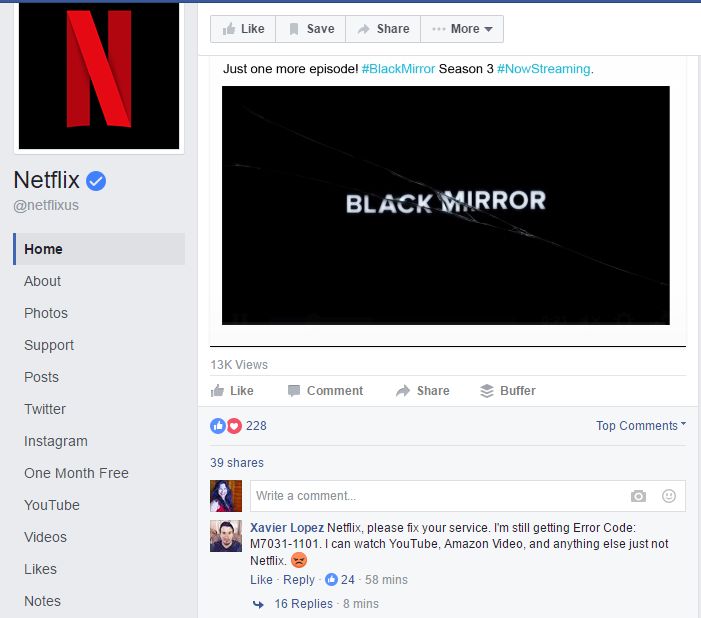
Folks on the East Coast woke up on Friday morning to find they couldn’t get to their favorite sites like Twitter, Netflix, Etsy, and others. According to Techcrunch, “The outages are the result of a distributed denial of service (DDoS) attack on the DNS provider Dyn, the company confirmed.”
The outage was first reported on Hacker News who had an updated list of sites that were crashing and Level 3 outage map showed the site impacted were mainly in the U.S.
Many of these hacked sites either didn’t either know or forgot to inform their users about the situation. Twitter users were visibly frustrated and used Twitter’s Facebook page to complain.

Some Netflix users on Facebook thought there was something wrong with the site.
There was no response from Twitter or Netflix on their Facebook pages when we checked at 1p PT.

However, the team over at Etsy was on top of it. They have a status site where users can go for more information and they shared it on their Facebook page as well.

The sites slowly crawled back to service later in the day but not before triggering massive waves of anxiety among many online users.
If you are a brand or have a business with an online presence, you should be asking yourself - What if my customers were trying to reach me on Twitter? What if my store was on Etsy? What if my site went down tomorrow?
These are all valid scenarios and need a real solution. Hoping and praying that your site isn’t the next target is not a smart plan.
Here are 4 steps you need to take when disaster strikes.
#1) Find out what’s going on. Your other social channels and email system are most likely getting flooded with questions because your site’s not working. Find out which parts of your site are down and the extent of impact. Is it just your external facing customers or internal stakeholders also impacted? Are other sites affected as well? This will help you figure out who needs to know, what they need to know and best way to reach them.
#2) Craft a clear communication. Draft a short statement explaining what’s going on. If you don’t know, do NOT speculate. Let them know you don’t have the details but you are looking into it. Depending on the impact, you may want to craft two different versions – one brief statement for your customers/users and another more detailed version for your employees on how to answer questions and help customers.
#3) Go to plan B. There is no excuse for keeping your customers guessing especially, if your revenues AND theirs are depending on it. Communicate the news through other channels that your customers use frequently. Use Facebook, LinkedIn or email to communicate with your customers in the interim.
#4) Do a post-mortem. After all the craziness has died down, the site’s functioning again, questions have been addressed, customers have been helped and everyone’s had a chance to breathe, get your team together to discuss what went well and what would have helped you respond faster. Pre-mortem ie. planning and being ready before your site is impacted is an even better idea. Why wait until things go wrong? Get ready now!
Cyberattacks are a reality of the world we live in and we are more exposed than ever before so this isn’t the last we’ve heard of it. So make sure you have a plan B and test it to make sure it works when things fall apart as it’s very likely they will.
